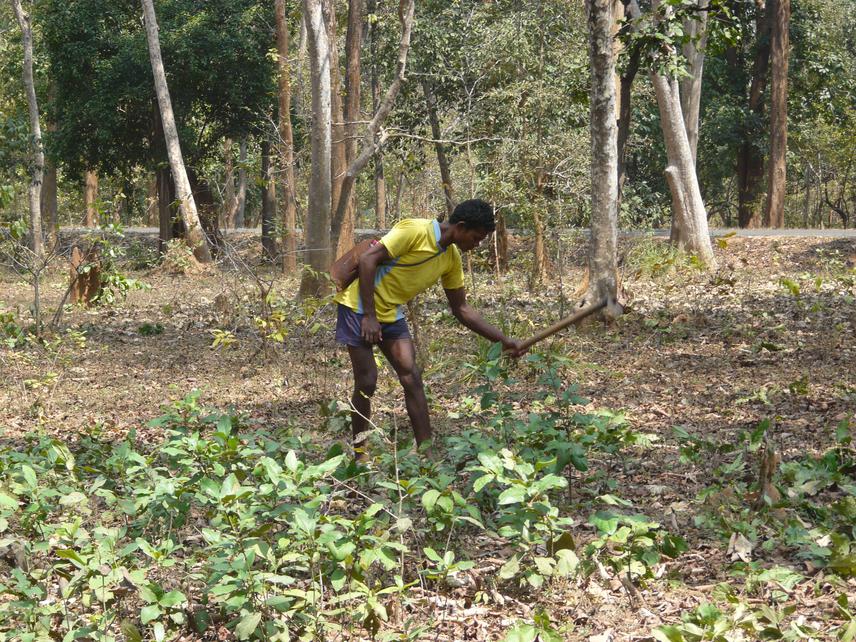Anuja Date
Many villages in Gadchiroli District (India) have received forest management rights under the Forest Rights Act, 2006. Incomes for such villages depend on non-timber forest products such as Tendu leaf. Harvesters traditionally adopted fires for promoting profuse leaf production. However, some communities believe that use of fire is detrimental to regeneration of Tendu itself and also of other forest species. Nowadays, they increasingly adopt fire-less methods like bush-cutting. The proposed project aims at comparing impact of these methods on Tendu leaf production and estimate the impact on livelihoods. Further, it aims to understand communities’ motivation to adopt conservation-oriented management.

Bush Cutting.
Forests of eastern Maharashtra (India) contiguous with the central Indian forest belt, constitute the major portion of dense forest cover in the state (48%). Gadchiroli District in Maharashtra is one of the first places in India where forest-dwelling communities have received community forest resource (CFR) rights under the landmark Forest Rights Act of 2006 [FRA]. Over 1300 villages in Gadchiroli had received such rights by 2016. Such communities are finding new ways to conserve, use and manage their forests. Communities confront several challenges as they try to balance livelihood and conservation goals.
One example is management of Tendu (Diospyros melanoxylon). Tendu leaf is a highly valuable non timber forest product with an annual turnover of more than 100 thousand USD (80-90 crore INR) in the district. However, there are conflicting ideas on how Tendu leaf production should be managed. Communities traditionally believe that use of forest fires enhances leaf production. Yet, they also recognize that fires may have detrimental impact on population of Tendu itself and on the forest as a whole. Through preliminary studies, it was found that some communities are experimenting with new forms of Tendu management like banning fire and only using methods like coppicing. There is little data on how these methods impact leaf production and ultimately local livelihoods. Due to the ambiguity about livelihood trade-offs, communities may revert to use of fire without finding ways to incentivize conservation-oriented management. This work will therefore assess the livelihood impacts associated with adopting conservation-oriented practices. It will also focus on understanding motivations behind communities’ choices of management practices.
For the study, assessment of Tendu leaf production under different management practices will be conducted through a plot survey using a systematic sampling method covering four villages across two blocks namely, Korchi and Kurkheda. To understand the choice of different Tendu management practices, in-depth interviews and focus group discussions will be conducted with member of the village councils. The study will lead to key insights which will enable improved management of community forest rights forests in central India. The study will identify the different considerations (economic, social and ecological) based on which communities make ecological decisions and will provide insights on how community-led forest management practices deal with trade-offs between conservation and livelihoods.